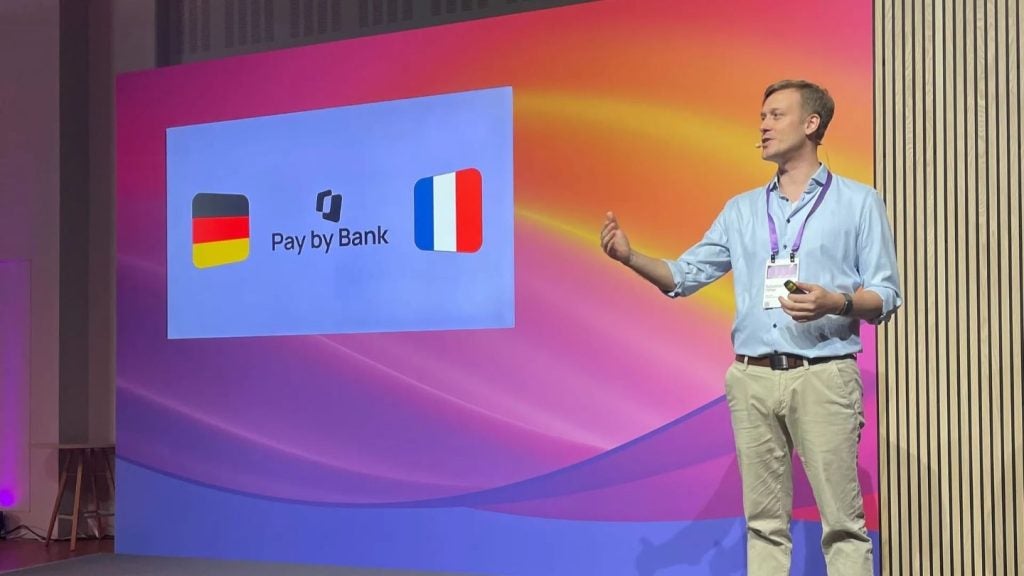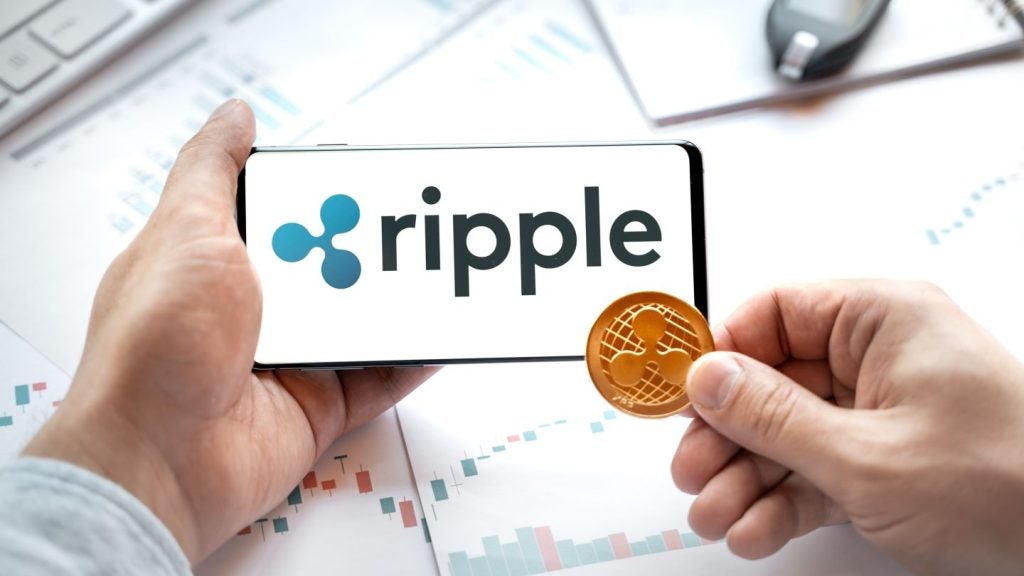Payment industry players point to the
need to innovate to attract and retain customers and to fight the
war on cash. Although some propositions such as mobile, prepaid and
contactless are gaining traction, it appears that the tipping point
towards critical mass is still far away. Divya Guha and Victoria
Conroy report.
 Most sharks need to keep
Most sharks need to keep
swimming in order not to sink to the bottom. But if stagnation were
plastic’s end, we wouldn’t know it, as right from the emergence of
the first Diner’s Club credit card in the 1960s, the payments and
card market has not stopped reinventing itself to become the
multi-billion dollar source and driver of revenue that it is
today.
Growth and innovation have brought riches
to the cards and payment industry as well as banks, lenders and
retailers. Many initiatives have been rolled out on the back of new
regulation that is largely out of the hands of financial
institutions to influence, and at other times initiatives have been
novel ideas to make payments quicker, safer, easier and more
profitable, while answering specific needs of given customer
bases.
Take for example mobile payments in India,
which could offer financial inclusion to the 41 percent in the
country who are still unbanked – making inroads where a commercial
infrastructure has not. The potential for the growth of mobile
payments among the billion-strong population is incomparable.
In the developed world, however,
opportunity has a different face. The cards industry has rolled out
a number trials and tests with contactless and mobile payments, but
very few initiatives have so far had real success.
It has been tough trying to convert
cash-centric consumers and reluctant merchants who are concerned
that the costs of installing the infrastructure for any new payment
technology, like say contactless payments, may be more expensive
than handling cash.

US Tariffs are shifting - will you react or anticipate?
Don’t let policy changes catch you off guard. Stay proactive with real-time data and expert analysis.
By GlobalDataInnovation for innovation’s
sake?
E-invoicing has been one innovation that
has accomplished some success in paperless billing and of course
there is the Oyster card on the London transport network, which
industry players say has done a great deal in increasing awareness
of technology among consumers. But the picture is not as clear in
the field of contactless or mobile payments.
The availability of partners to share the
big investments and risks involved will naturally spur banks on to
facilitating such innovations for their customers.
And if contactless were to exceed its
current remit of small purchases, the most visionary among the
banks may even have to look beyond the current trends towards the
next generation of innovation such as biometric authentication.
The investment takes major commitment and
banks are not yet ready to change what they offer customers, seeing
that the old offerings seem to work just as well and that there has
been unwillingness from both merchants and consumers to adopt new
payment methods.
Louise Brett, the head of UK customer and
channel strategy at advisory firm Deloitte, has in the past
lamented the slow take-up of new innovations. Even if the
regulatory or economic climate is right for brewing ‘the perfect
storm’ for new technologies to thrive, she says, unless rules of
the game are sometimes broken, new products will fail.
However, the marketing manager for
Northern Europe at contactless terminal manufacturer Ingenico,
Gregor Rankin, is a self-confessed contactless ‘evangelist’ who is
very clear as to the potential of contactless.
“I see 2009 as the big year for
contactless, certainly in the UK. I think the way it’s deployed in
the UK will accelerate its adoption in other areas, particularly in
other parts of Europe. The reason I think 2009 will be the big year
is that obviously we’re seeing a phenomenal push from the banks
now. Nearly all debit cards issued by Barclays this year will be
contactless, and we’ve also seen a lot of issuance activity from
Royal Bank of Scotland. Contactless issuance will be very
significant – certainly well over 5 million issues this year
alone,” he told CI.
Rankin is adamant that the push for
innovation is coming from consumer desire, and not from payment
players innovating just for the sake of it.
“My belief is that what is really going to
drive contactless adoption is cardholders themselves,” he says. “We
can talk until we’re blue in the face about the benefits to
retailers and the benefits to the bank and acquirers, and some of
the figures we have from some of the pilot projects already rolled
out in places like France suggest double-digit growth in footfall
and revenue. But the increase in convenience for the cardholder
drives the increases and benefits for the actual retailer.
“With what’s going on in retail at the
moment it could become quite an exciting opportunity in 2009, and I
think retailers who adopt it early will see the benefits quite
quickly.”
Critical mass for
contactless
Ingenico recently released the results of
a survey conducted on its behalf by consultancy Loudhouse Research,
which examined 1,000 UK consumers and their attitudes towards cash
usage and their willingness to use contactless payments.
While only 8 percent of people surveyed
were already using contactless debit or credit cards, 33 percent of
those surveyed said they would consider using the technology,
indicating that the lack of consumer education and awareness of
contactless is hampering uptake – along with merchant reluctance
over its long-term viability. But Rankin is confident that consumer
desire and subsequent satisfaction will spur more retailers to
accept contactless.
“The major retailers are very much waiting
to see what will happen and not making a commitment to contactless
right now. When the word of mouth goes around about the convenience
and usefulness of contactless, the awareness and usage levels will
go up exponentially over the course of this year as more retailers
begin to accept contactless and more cards are issued by the
banks,” he says.
One other issue that may be a hurdle to
greater adoption of contactless is transaction limits. Contactless
has been designed to replace low-value cash purchases. Although the
current limit for contactless payments in the UK is set at £10, the
survey found that shoppers are happy for this figure to rise to an
average of £35.10. Retailers such as the big supermarkets have also
questioned the need for them to sign up for contactless when the
bulk of their customers spend far more than the £10 limit.
Rankin says: “We’re often asked by
customers if that £10 limit will ever change. The survey showed
that 37 percent were prepared to spend between £10 to £40, which is
well over the existing limit. The average amount that people are
happy to spend with cash was £48, the average with a contactless
credit or debit card was £35, again well above the actual current
contactless transaction limit, and not a million miles away from
what people are prepared to spend with cash.
“That would certainly support the argument
that further down the line we’ll see a relaxation of what initially
seems like a small limit. Some retailers come to us saying that
their average basket is over £10, so they don’t see the benefit.
But then other retailers actually want to deploy it. I don’t think
retailers have come to a shared mindset yet over how they want
contactless to work, which is I think quite interesting.”
The advent of multi-function cards, which
can combine different payment applications, or payment applications
with other applications such as loyalty schemes or security access
functions, is another innovation that has the potential to
transform consumer payment trends.
Already in existence in countries like
Finland (see Finland plays its cards right), and in
Asia-Pacific countries where they are typically payment/transit
cards, multi-function cards could prove to be the payment
industry’s ‘holy grail’, according to Dr Hermann Sterzinger, group
vice-president and head of business development at German card
technology provider Giesecke & Devrient.
“Bundling payment and transport ticket
functionalities in a single card is an important step in the right
direction and all the technology for these multi-function cards is
already in place. It is now more a question of acceptance by
partners,” he told CI.
Ingenico’s Rankin says that
payment/transit cards, such as the Octopus card in Hong Kong, and
the Oyster card in London, have done a great deal in raising
awareness of contactless technology with consumers worldwide. With
the September 2007 launch of the Barclaycard combined Oyster,
contactless and credit card, UK consumers have now been introduced
to an example of a multi-function card that could replace the cash
in their pocket. The announcement that Barclays is to start rolling
out contactless technology on its debit cards this year will also
spur consumer uptake, according to Rankin.
“The Oyster initiative obviously generated
quite a lot of press and initial awareness of contactless, and
obviously it resonated heavily within London,” he says. “For
obvious reasons within the London zone, people get the concept of
contactless credit and debit cards pretty quickly because of the
Oyster scheme.
“At the end of the day, when you look at
the way people will use contactless, they’re using it for cash
replacement, they can use it for all of the small quick purchases
they need to make for lunch, for coffee, for train tickets and so
on. I believe the contactless shift to debit will fit really neatly
with cardholder desire, that will really be the sweet spot and
perhaps where we will see a massive amount of acquiring on the
contactless side.”
However, it may not be long before the
widely accepted card format may give way to mobile-shaped
wallets.

Mobile payment
momentum
Near field communication (NFC) is being
touted as the replacement for contactless cards, or potentially
even the wallet. It is a short-range wireless technology that
evolved from existing contactless technologies, and is supposed to
simplify the way consumer devices interact with one another.
However, it is attractive because of the
wide range of uses it can be put to – from paying hotel bills to
opening a door or linking up to city guides for tourists. Payments
seem to comprise only about 15 percent of the total scope that the
NFC technology offers. Another one of its advantages is that it can
run on the same infrastructure as contactless cards technology.
Pascal Metiver, president of the EMEA
region at VingCard, a manufacturer of NFC-enabled hotel locks, says
that on the whole, NFC acceptance has been slow.
“If you take a normal technology cycle,
it’s typically seven years. We’re probably reaching year
three-and-a-half to four years now on a global basis,” he says.
But this could change as NFC-enabled
mobile phones become ubiquitous.
Ingenico’s Rankin is also optimistic about
the prospects for mobile payment. The Ingenico survey revealed that
around 20 percent of people had heard about mobile phone payments
compared to the 12 percent aware of contactless technology. This is
odd because contactless cards have been around and promoted a lot
more aggressively by issuers than NFC technology so far.
“We’re expecting all of the major handset
manufacturers to have NFC-enabled mobile phones by the end of this
year, and the number of phones in the market to reach something
like 450 million in the next two years after that,” he told
CI.
“Within the UK, we expect a fairly high
adoption rate in comparison with other parts of the world.
Supermarkets could put their loyalty programmes directly onto
people’s phones, and as an always-on item it can link directly into
the internet. It provides the ability to close the loop with
customer loyalty schemes and provide a lot of value of interaction
with customers.
“Obviously NFC can replace your
contactless credit or debit card or if you want to get around the
limitation on a contactless purchase of £10 or whatever it may be
in the future, but there are models which Visa have demonstrated to
us, which allow your actual credit card to exist on your NFC phone.
By using an identification method such as entering a PIN on your
phone itself and representing your phone to the contactless
terminal, you could make a transaction that would be a credit card
transaction rather than the contactless limit of £10.”
Mobile payment may also prove to be the
‘virtual wallet’ of the future. Ingenico’s survey found that of the
41 percent of people who would consider using or would definitely
use the technology, the top three benefits were cited as
convenience, a reduction in queuing times and a preference to carry
less cash and cards around.
Interestingly, only 12 percent of
respondents saw the improved security of mobile payment as a
benefit.
“At least a third of people surveyed want
fewer cards in their wallet,” Rankin says. “There is the idea that
potentially you could have all of your cards existing in a virtual
wallet in your phone – there are some stats around to suggest that
if you lose your phone you will realise much more quickly than if
you lose your wallet.
“You can already protect your phone with a
PIN, in a way that most people don’t protect their wallet, so there
are some additional layers of security which can be enabled there
which a lot of cardholders would find quite attractive.”
The issue of consumer
education
Major industry players, while welcoming
the emergence of mobile and contactless payment technology, are
also frustrated that what seems to be slowing adoption is the fact
that there has been no clear, cohesive strategy among the payment
industry around educating consumers.
Obviously different banks are rolling out
their various propositions at different times, and those
propositions may also have different customer targets. But there
have been calls for Visa and MasterCard, the two driving forces
behind contactless and mobile payments, to do more to promote them
among consumers, instead of expecting banks and third-party players
to do the educating for them.
Rankin says: “It’s surprising how little
activity there’s been in terms of promoting contactless. If you
look at the push we had for chip and PIN, admittedly a lot of that
was around the whole chip and PIN campaign, and a lot of that came
from government funding. On contactless, the major schemes have
been surprisingly quiet.
“I think a lot of awareness will be spread
by word of mouth. It could just be the case that Visa and
MasterCard have been very canny in keeping their powder dry, and
letting that word of mouth do the job for them. It may mean that
the initial adoption is a bit slower and certainly in the industry
there are probably people who feel a little bit impatient because
they’ve been talking about contactless for a couple of years
now.
“It’s only really now that we’re starting
to see significant ramp-up of deployment on the initial device side
from the banks. But I really do believe that word of mouth and
usage by cardholders is going to really spur adoption and
enthusiasm and make adoption of the technology go exponential this
year.”
Technology
The wacky world of card
innovation
Other kinds of innovation may not be
getting the attention that mobile and contactless have received,
but nonetheless they are noteworthy for their forward thinking.
Vending machines that can dispense marijuana
with the swipe of a card have cropped up all over Los Angeles. But
it’s not for everyone, just those with medical prescriptions who
need to first undergo a process more familiar to those caught using
drugs illegally – providing fingerprints and being photographed.
They then receive a prepaid card containing their profile.
The machines first verify fingerprints and the
card before dispensing the drug in a bright green envelope.
Auto manufacturer BMW has teamed up with NXP
to device a car key that doubles up as a credit card. Of course,
this also means that BMW drivers can now lose their car keys and
their credit cards simultaneously.
Meanwhile, technology giant Apple is reviewing
a new application that will turn the iPhone into a credit card
terminal.
Biometric and smart card technology developer
SmartMetric is pushing a credit card that is fitted with a
processor with more than a gigabyte of memory, a rechargeable
battery and a fingerprint sensor – the only card that can be used
for POS and online authentication via a USB adapter.
Meanwhile, Visa has rolled out a card with an
embedded battery circuit and chip. When making a transaction, the
cardholder enters their PIN, and a code is generated by the card
that appears on its keypad which can be used for making a purchase.
This is the next step towards guarding against fraud.
Lastly, Fashion Fever is a toy credit card
that allows children to set up their own store and buy outfits for
a Barbie doll and check their account’s balance. Once the balance
hits zero, it automatically resets, and the cardholder can continue
shopping.
An innovative way to teach the young about
credit?







